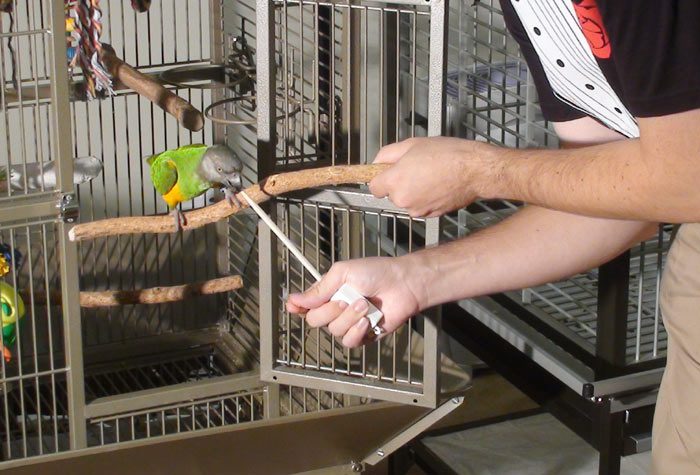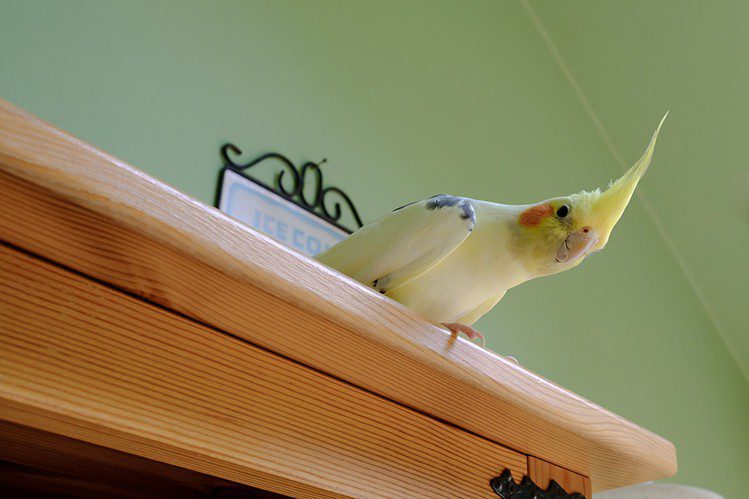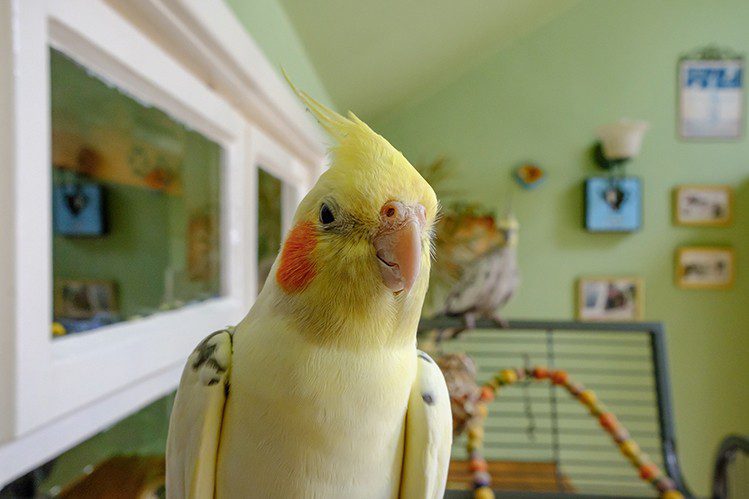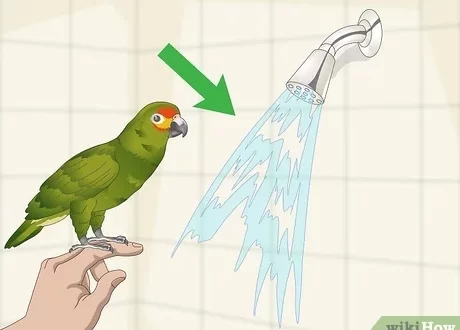
Should I let the parrot out of the cage?
When a parrot first appears in your home, it’s like opening a blank page. You have to fill it with answers to current questions about the care, maintenance and feeding of your beloved pet. Over time, you will learn a lot of interesting things and, perhaps, become experts yourself. Well, we will help you with this! Today we’ll talk about whether it is necessary to let the parrot out of the cage and how often to do it. Take note!
Contents
Do I need to let the parrot out of the cage?
Letting the parrot out of the cage is not only possible, but necessary. Even if the cage is spacious, the parrot moves in it at most from perch to perch, to the feeder and back. Without optimal loading, its wings will atrophy and the bird will stop flying altogether.
When a parrot flies and warms up, it improves metabolism and digestion, and the overall tone of the body increases. The bird, all the time locked in its cage, becomes sickly and loses interest in life. Therefore, it is necessary to release a parrot. The main thing is to do it right!

How to let a parrot out of a cage?
The correct “walk” scenario looks like this: you open the cage door and leave it open, the parrot flies out, travels at its pleasure, returns to the cage on its own, and you close the door behind it. Many novice owners will be surprised: will the parrot return to the cage on its own? Yes, and yes again. He has a favorite house, food and water there. Just give it time!
But pulling a parrot out of a cage or catching it all over the apartment to drive it back is not worth it. For him, this will turn out to be a huge stress, which in the worst case will lead to death from fear. Do not forget that parrots are very sensitive animals.
To make the “journey” of the parrot pleasant, properly prepare the apartment. Check if the windows are closed. Curtain them, otherwise the parrot may hit the glass. If you have other animals, such as dogs or cats, close them in another room. Limit access to wires, household appliances and all items that are potentially dangerous to the bird. A parrot flying out for a walk should always be in your field of vision. There are many dangers in his apartment, and you need to be on the lookout.
When can you let a parrot out of its cage?
How to let a parrot out of the cage for the first time? The scheme is the same. The only thing is that at first the bird must fully adapt: get used to its housing and to you. If you have recently acquired a parrot, take your time with walks. It usually takes about 2 weeks to adjust. After this period, you can let the parrot out of the cage.
How often should a parrot be let out of its cage?
Healthy physical activity has never harmed anyone. Experts recommend releasing parrots daily, for 2-3 hours. This is especially important if the cage is small and the parrot lives alone in it.
By the way, it is best to release parrots during the day. It is safer for them to spend the night in their cage.

How to get a parrot into a cage?
And now more about how to drive a parrot into a cage after a walk. We already wrote that, ideally, the parrot will fly there on its own when it “works up”. But what if the pet is in no hurry to return to his house, and you no longer have the opportunity to follow him? Remember that it is dangerous to leave a bird “free range” unattended?
If the parrot is tamed and trusts its owner, returning to the cage is not a problem. In such cases, the owner simply calls the pet, he sits on his hand, and the owner brings him to the cage. But in order to achieve mutual understanding of this level, you will have to try, and this process can take a long time. Therefore, other methods are most often used: luring with treats and toys.
- Treat lure
– Use a treat that your parrot is crazy about. Attention: this should be a special balanced treat for parrots, and not a delicacy from the human table.
– Put a treat in the cage and in the palm of your hand. Call the parrot by name, showing him a treat. The parrot will either fly into the cage on its own, or sit on your palm.
– When the parrot sits on your palm, let him peck at the treat and carefully place it in the cage.
Don’t force things, be patient. If the parrot is full or excited about something, the treat may not attract his attention. Give him time or try to lure him with a toy.
Many owners use this tricky method: they remove all food from the cage about an hour before the planned walk. During this time, the bird will have time to get a little hungry and, after flying a little, will more willingly return to the cage for a fresh treat.
- lure with toys
Every parrot has favorite toys. Sociable parrots will be very happy to see them in the hands of the owner, and they will definitely come to play.
Toys are also saved in situations when the bird was frightened of something and hid in a secluded place. Try bringing her favorite toy (like a mirror) to her and offer her your hand or a perch to “land”. Noticing a familiar familiar toy, the parrot will be distracted from excitement and, climbing onto a hand or a perch, will begin to play with it. Your task is to carefully bring the pet to the cage without frightening it.
- Playing with light
In some cases, darkening the room can help bring the bird back into the cage. Turn off the lights in the room or close the curtains. Give the parrot some time: his instincts will tell him to return to a safe shelter – a familiar and such a reliable cage, with fresh water and food!
In no case do not catch the bird with your hands or net, do not try to cover it with a cage! So you can injure your pet or scare him a lot. Parrots are very sensitive animals, and a strong fright can cause serious health problems, and in the worst case, death.
That’s all the main points. Now you know whether to let the parrot out of the cage and how to do it right. Take care of your pets and let their walks be the most enjoyable!





